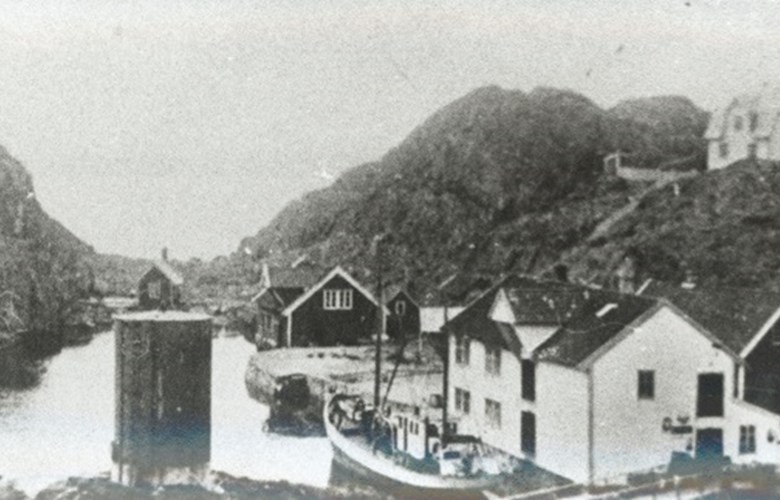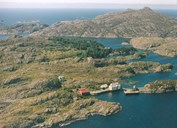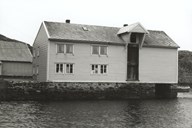With the syrup barrel in the bedroom
The young Knut Berentsen (1867 - 1952) from Indrøy went first to Bergen to learn carpentry, and while in the apprentice home, he found himself a wife, Hanna. Work was difficult to find, so his father rented a motorboat and brought his only child and his family home. He lent his son NOK 300, which they spent on commodities, and Knut set up in business in a bedroom beside the living room where they lived. Bringing the commodities in a rowboat from Tangenes to Indrøyvågen was hard work, the syrup barrels weighing 300 kilos, the flour bags 100.
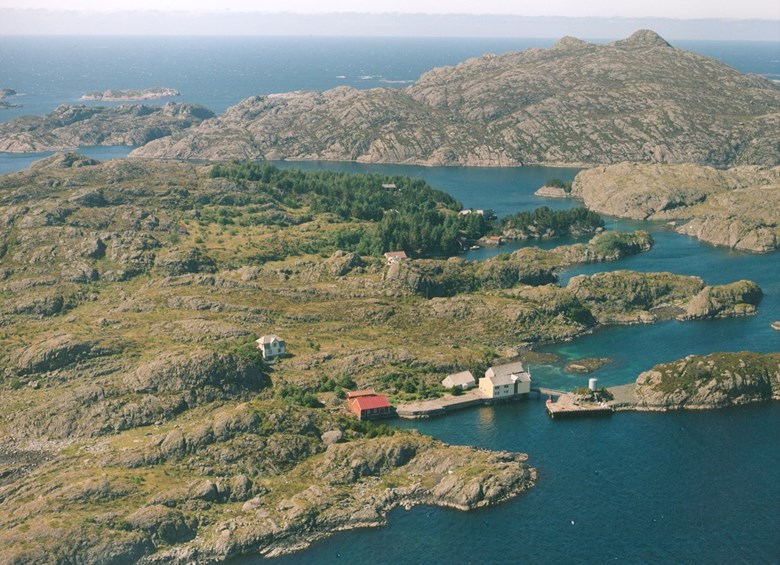
Warehouse from the "Tyskebryggja" (the Hanseatic quay in Bergen)
Knut bought lobster, salmon, later all kinds of fish, first for sale in Bergen, later for export. His business needed more space and was after some time moved to the east side of the island. Around 1890, he bought and brought home a warehouse from the "Tyskebryggja" in Bergen. He now operated a general store on the ground floor, living upstairs with his family, and there was still reasonable room for merchandise and fishing equipment.
He bought all he could put his hands on of kelp, liver, and bait shell, and he smoked the liver and stored the fish liver oil in large barrels. He hired people to blast rock and prepare the ground for more storage space, with a concrete floor. At the front, they had a quay built.
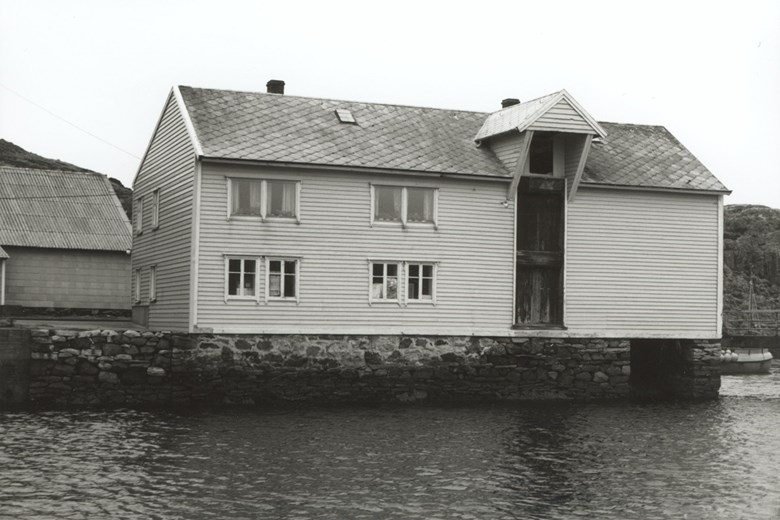
The man who never slept
The versatility of his business required new buildings: a shed for the fish liver oil, one for ice, a sea warehouse, a shed for the seine. Knut bought seines for the winter herring fisheries, and several fishing vessels. Best known is the 58-foot long Stål 1, which one night in 1941 was "taken" by Norwegians who escaped to Shetland, and the new one, a little bigger, Andholm. The vessels, which went fishing from the Hebrides to the Barents Sea, were operated by the next generations and by hired crew. At Indrøy they salted winter herring. The Berentsen vessels and other vessels brought their catch, and a good many people were employed on shore. Knut was the engine which ran almost 24 hours a day, yet he together with his wife found time also for religious work.
Commercial quay and oil tank
Fylkesbaatane (steamship company) made stops with their ships at Indrøy 2-3 times per week. And Knut had an agreement with a shipping company at Møre to stop on request to take goods to England. The new commercial quay built in 1930, meant a great improvement. Now the Gula as well as bigger freighters could call. On the hill behind the shop building, a new residential building came up. The man whose education was primary school and a carpenter's apprenticeship, corresponded with America and half of Europe, and he now had more space.
Indrøy is overtaken by time
In the 1950s and 1960s, new roads were built through the rocky landscape of Solund, but no road was made to the very rugged island community around Indrøy. The herring fisheries were now history, and the stock of other kinds of fish were in steep decline. People started to look for more secure income, and the population started to go down. The resources and the customers of the business at Indrøy were no longer there.
However, the trading post of Indrøy is a beautiful and pleasant holiday resort for the present generation, and the few pensioners who have their permanent homes there can walk around the buildings and quays, and read the story about the enterprising, level-headed, and honest merchant Knut Berentsen. Indrøy trading post was chosen by the municipality of Solund for the culture year.

